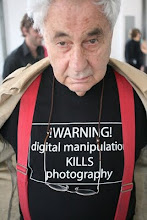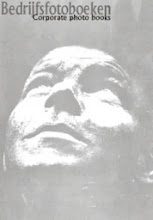 Magnum Photographer Burt Glinn Dies At 82 April 09, 2008 by Daryl Lang ...
Magnum Photographer Burt Glinn Dies At 82 April 09, 2008 by Daryl Lang ... Burt Glinn, a prolific documentary and commercial photographer who was one of the first American members of the Magnum Photo agency, died early Wednesday morning at his home in East Hampton, N.Y.
Burt Glinn, a prolific documentary and commercial photographer who was one of the first American members of the Magnum Photo agency, died early Wednesday morning at his home in East Hampton, N.Y.Glinn was 82 and died of kidney failure and pneumonia, according to Magnum director Mark Lubell.With a background in photojournalism, Glinn's willingness to take on corporate work set him apart from some of his early Magnum peers.
It led him to a long and productive career covering current events and culture for magazines, augmented by lucrative ad shoots for some of the world's biggest companies.
Friends remembered him as a workaholic with a good sense of humor.
"He was good at most everything he took on," says fellow Magnum photographer Elliot Erwitt.
"He was one of the pillars of Magnum.
"In an interview last year with the ASMP Bulletin, the publication of the American Society of Media Photographers, Glinn said he was grateful for his long career.
"[I]t was a great, great thing for me to have lucked into the idea of photography as a career," Glinn said.
Born in Pittsburgh in 1925, Glinn served in the Army from 1943 to 1946 and later studied literature at Harvard University.
He began working for Life in 1949.
Along with Eve Arnold and Dennis Stock, Glinn was among the first Americans to join the fledgling Magnum agency in 1951.
He would later serve as Magnum's president twice.
Glinn was an early advocate for photographers maintaining the copyrights to their images and served as president of the ASMP in the 1960s.
In 1956, Glinn covered one of his first international assignments, the Sinai War.
 On New Year's Eve 1958, Glinn rushed to Cuba to cover the takeover of Fidel Castro.
On New Year's Eve 1958, Glinn rushed to Cuba to cover the takeover of Fidel Castro.His photos from 1959, and from another visit to Cuba four decades later, were collected in the 2002 Umbrage Editions book Havana: The Revolutionary Moment.
In 1959, he shot a famous photograph of Soviet leader Nikita Khrushchev, seen from the back, visiting the Lincoln Memorial.
 Glinn established himself in the 1960s as a color documentary photographer for magazines like Holiday, Look, Life, Paris Match and Geo.
Glinn established himself in the 1960s as a color documentary photographer for magazines like Holiday, Look, Life, Paris Match and Geo.In addition to news, he covered politicians and celebrities.
 A 1965 portrait of Andy Warhol, Edie Sedgwick and Chuck Wein appearing to emerge from a manhole is among his most recognized photographs.
A 1965 portrait of Andy Warhol, Edie Sedgwick and Chuck Wein appearing to emerge from a manhole is among his most recognized photographs.Working with writer Laurens van der Post, Glinn produced two books, A Portrait of All the Russias (1967) and A Portrait of Japan (1968).
As he built his reputation as a commercial photographer, Glinn shot ads and corporate work for the likes of Pepsi and Pfizer, major banks and manufacturers.
But he also continued to shoot documentary work, including a photo essay on medical science in the 1990s.
 Amsterdam-based photographer Shirley Barenholz, who worked as Glinn's assistant in the 1990s, remembers him as quiet, good-humored and willing to help younger photographers.
Amsterdam-based photographer Shirley Barenholz, who worked as Glinn's assistant in the 1990s, remembers him as quiet, good-humored and willing to help younger photographers."He had an amazing way of giving his knowledge and his greatness in photography, to give it to people like me who had just started out," Barenholz says.
Even in his commercial work, Glinn considered it his role to find the key elements in a real scene, rather than invent a picture, which he thought of as less believable.
"My work is to react and to organize – or recognize the organization in – a totally fluid, always changing, anarchic world," Glinn said in a January 1987 PDN article.














Geen opmerkingen:
Een reactie posten